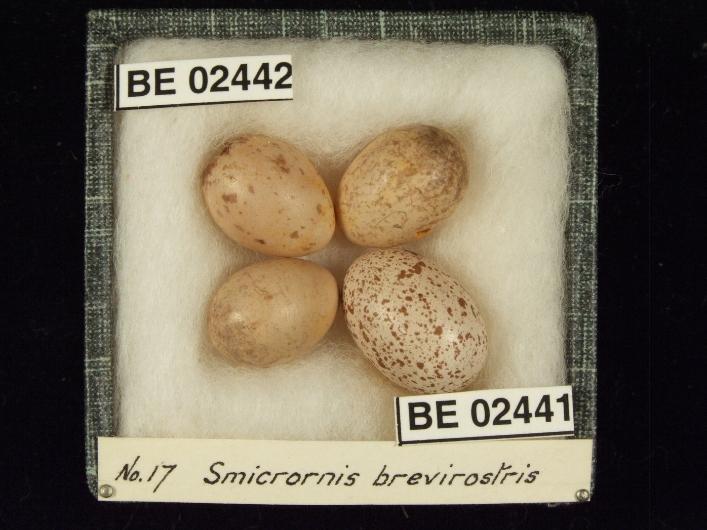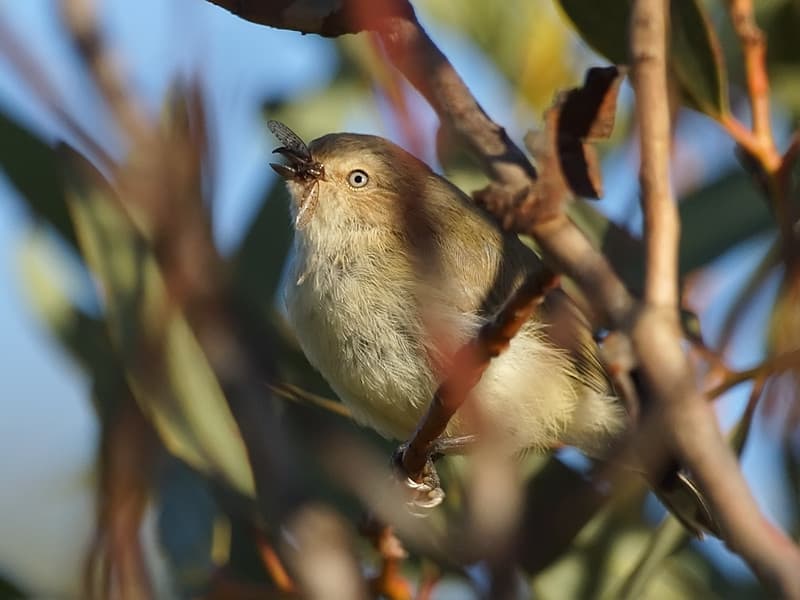Most people would be aware of Australia’s largest bird, the Emu, an awkward-looking, flightless creature that has become an icon of our beautiful country. What about the smallest bird in Australia though? It doesn’t garner any attention, so in this article, I will make it the star.
Australia’s smallest bird is the Weebill, a passerine (perching bird or songbird) that is around 8 to 9 cm (3.1 to 3.5 in) long. An adult Weebill weighs just 6 g (0.21 oz) and has a wingspan of about 15 cm (5.9 in). They are olive-gray and yellowish birds with short, stubby beaks.
There is so much to learn about the Weebill. Read on to find out where they live, what they eat, how they sound, and more about this fascinating little bird.
How To Identify The Smallest Bird In Australia By Sight

The Weebill’s plumage ranges from olive-grey on its upper parts to more yellowish on its belly and under the rump. In the southern parts of Australia, they are browner and Weebills in the tropical areas are more yellow.
Their defining characteristic is their short stubby bill or beak. The Latin name for the Weebill is Psilopus brevirostris. Brevirostris is derived from the Latin words brevis, meaning ‘short’, and rostrum meaning ‘beak.’
Adult Weebills have pale yellow eyes and a cream-coloured supercilium (the strip above the eye). The feathers on the throat are grey and often have striation (alternating light and dark bands).
The beak of a Weebill is pale grey in adult birds and yellow in young ones. The juveniles also have greener eyes than adult birds.
Weebills are often confused for Thornbills which are also small, mostly brownish-coloured birds. What makes them different is their short beak.

Discover 10 Australian birds that just love that sushi in this post here on my blog.
How To Identify A Weebill By Sound
For such a small bird, the Weebill has quite a loud call which can be heard in the Australian bush from quite a distance away.
Listen to the recordings below from the Cornell Lab Of Ornithology to hear the various calls of this amazing little bird. Each recording was made in a different state in Australia. Listen to each one to hear the subtle differences in their calls:
Where To Find Them
Weebills can be found all across mainland Australia.

They prefer open eucalyptus forests but can be found in almost any wooded area. They spend most of their time high in the canopy flitting about catching insects from the leaves at the outer edges of trees.
Weebills often flock with other birds such as Thornbills, Silvereyes, and others when feeding. This is probably why they are often confused with thornbills.

Is a 300mm lens enough for bird photography? Find out in this article right here on my blog.
All About Weebil Nests
The tree canopy is where they will build their nests also. A Weebill nest is made from grasses and plant fibres suspended from a branch and hidden in the canopy. There is a narrow spout-like entrance at the top of the nest.

These dome-shaped nests often contain cobwebs, insect cocoons, and animal hair which all help to bind together and strengthen the nest.
Weebills have been known to nest right next to the nests of the communal spider Badumna Candida. This is quite strange as Weebills eat spiders?! Their reasons for doing this are not known, it may be that they gain protection from predation by birds, mammals, reptiles, and also parasitical insects. It may simply be a matter of concealing the nest by situating it right up against the spider’s nest.
If you want to explore more information about Weebills nesting next to spiders, read this article by J. N. Hobbs in The Australian Bird Watcher.
The female Weebill normally lays two to four brown-speckled, cream-coloured eggs which she alone will incubate. The young hatch after around 10-12 days and both parents care for them.

Do you wonder how birds make eggs? Find the answer here.
What Do Weebills Eat?
Australia’s smallest bird is insectivorous which means they eat insects and the larvae of insects. Occasionally they will also eat seeds.

They will eat arthropod prey such as spiders, beetles, and flies. Weebills help with plant health as they eat a lot of pests that would damage the trees such as psyllid.
Their short beaks are perfectly designed for gleaning; a method of catching food by plucking it from the foliage of trees, or the ground. They will also hover while picking food from the leaves of trees high in the canopy.
Is The Weebill Really Australia’s Smallest Bird?
If you have read this far into the article, you are probably saying “What?! You made me read this far just to tell me that the Weebill is not Australia’s smallest bird?!” Relax, I am about to explain…

The image above is a Mallee Emu Wren, often considered to be the smallest bird in Australia. The problem, however, is that to call it the smallest, we have to discount its tail in the measurement.
The Mallee Emu Wren does have a smaller body than the Weebill but that lovely long tail robs it of the title of the smallest bird in Australia. From the tip of its head to the tip of its tail, a Mallee Emu Wren is 16.5 cm (6.5 in) – double the length of the Weebill.
Discover 17 funny Australian bird names in this post here on my blog.
Comparing The Smallest Bird To The Largest
Early in this post, I mentioned the Emu, Australia’s largest bird. But just how much smaller is the Weebill? Let’s do a comparison…

That tiny little dot on the left of the picture above is a Weebill! They are just a little longer than an Emu’s beak (the proportions of this Emu graphic are not quite right). Luckily for the Weebill, Emus are herbivores!
References
- Weebill calls – eBird
- Weebill – Atlas Of Living Australia
- Additional Weebill information – Wikipedia
- Feeding and breeding – Birdlife Australia
- Mallee Emu Wren comparison – Birds Of Australia, Peter Roland

